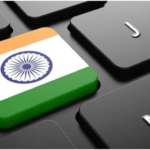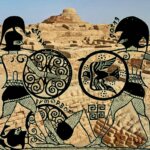The Indian National Congress is one of the world’s oldest political parties. INC, which was founded in 1885, has a long and storied history of struggle and success. The party has been at the forefront of Indian politics for almost a century and has been instrumental in transforming India into the modern country it is today. In this blog article, we will examine the history of the Indian National Congress and examine some of its most significant episodes. The largest political party in India is the Congress Party. The Indian National Congress led the fight against the British Empire to get India’s freedom. After India got its independence, it ran most of the country’s administrations and a number of state governments.
Indian National Congress’ Foundation Day: The Mother Of All Political Movements Of India
PRE-INDEPENDENCE
The Indian National Congress was founded in 1885, but the idea of an anti-British nationalist movement went back to the 1850s. In its early years, the Congress Party called for moderate changes, but the poverty caused by British imperialism made many of its members more radical. Early in the 20th century, the party supported swadeshi, which means “of our own country.” This encouraged Indians to stop buying British goods and instead buy goods made in India. In 1917, the “extreme” Home Rule wing of Bal Gangadhar Tilak and Annie Besant began to appeal to India’s different socioeconomic groups.
Gandhi’s Congress Party pushed for peaceful noncooperation in the 1920s and 1930s. Dissatisfaction with the Rowlatt Acts, which were changes to the constitution made in early 1919, and the way Britain carried them out, as well as anger among Indians over the deaths of civilians in Amritsar in April, led to the change in strategy (Punjab). As a way to protest British rule, the All India Congress Committee, which was set up in 1929, told people to avoid paying taxes. Gandhi led the Salt March in 1930, which was an important event. Another part of the Congress Party, the Swaraj (Home Rule) Party, wanted to work within the system that was already in place. They ran for national office in 1923 and 1937 as the Swaraj (Home Rule) Party, and in 1937 they won seven out of eleven provinces.
Post Independence Nehruvian Era
From 1951 until his death in 1964, Jawaharlal Nehru was the leader of the Congress Party. In 1964, Lal Bahadur Shastri and Indira Gandhi, who was Nehru’s daughter, were chosen as the leader of the party and the prime minister, respectively. Indira Gandhi faced an open mutiny within the party in 1967, and she was removed from power by a group called the “Syndicate” in 1969. However, her New Congress Party won a landslide victory in the 1971 elections, and it was still not clear if it was the rightful successor to the Indian National Congress.
Indira Gandhi
The iron lady of India who led in the 1971 war with Pakistan and liberated east Pakistan through iron will and decisive foreign policy. Her courageous leadership led to the formation of Bangladesh. Indira Gandhi’s era was controversial due to her decision to enforce emergency and the way state handled the Golden temple operation. Her bold decisions be it right or controversial are the hallmarks of her leadership and the tone of the Congress party in that era. She was assassinated while she was the PM of the country by her own guards. Her supreme sacrifice in the line of duty will be forever remembered by the country.
Rajiv Gandhi
Around the middle of the 1970s, support for the New Congress Party began to fall. In 1975, Gandhi’s rule became more and more strict, which led to opposition. In March 1977, the opposition Janata (People’s) Party won 295 seats in India’s lower house, the Lok Sabha, compared to the Congress’s 153 seats. Gandhi lost to her opponent from the Janata Party. On January 2, 1978, Indira Gandhi and her followers started Congress (I). The next year, enough MPs joined her new party for it to become the official opposition. In 1981, the national election commission said that it was the “real” Indian National Congress. In 1996, the letter “I” was taken out. Gandhi became prime minister again in 1980, after he won a seat in parliament again in November 1979. After she was killed in 1984, her son Rajiv Gandhi took over as the leader of India. In December, he got 401 seats for the Congress Party in parliament.
Rajiv Gandhi was removed from power in 1989, even though his party was the largest in parliament. In May 1991, a suicide bomber from the Tamil Tigers killed him while he was running for office. His replacement, P.V. In 1991, Narasimha Rao was the head of the government.
1991-present party
Rao liked the idea of opening up the economy more than the socialist background of the party. Because of corruption charges, the Congress Party’s number of Lok Sabha seats dropped to 140 in 1996, which is the lowest it has ever been. This made it the second-largest party in parliament. In September, Rao resigned as prime minister and party president. Sitaram Kesri, who was not a Brahman, took over as president after him.
In 1999, when the AIDMK, a major ally of the BJP, stopped supporting it, national parliamentary elections were held again. Even though its leaders campaigned hard, the Congress Party only won 114 seats. In 2004, the party won the election and got back to being in charge. Gandhi turned down the chance to be prime minister and instead backed Manmohan Singh, the first Sikh prime minister of the country. People were surprised when the party won 206 Lok Sabha seats in 2009. This was the most seats it had won since 1991.
By the 2014 Lok Sabha elections, the party had lost most of the public’s support because of the bad economy and a number of scandals involving government officials. It also put forward the son of Sonia Gandhi for the job of prime minister. BJP and Narendra Modi won over votes. The election results from mid-May showed a huge win for the BJP and a terrible loss for the Congress Party, which only got 44 seats (in 2015 the party won a by-election in Madhya Pradesh, increasing its seat total to 45). The worst showing for the party in a national election. It couldn’t become the official opposition party because it didn’t have 55 MPs, which is 10% of the total number of MPs. Singh quit on May 26, the day that Modi became president.
Sonia Gandhi quit as president of the Congress Party at the end of 2017, and Rahul took her place. As a member of the fourth Nehru-Gandhi generation, he was called aristocratic and dull. People thought that his showy devotion to Shiva was an attempt to make the Hindu populists in his party happy. Gandhi’s show of Hindu devotion and efforts to heal party tensions helped the Congress Party beat the BJP in the 2018 state elections in Hindu strongholds Madhya Pradesh, Rajasthan, and Chhattisgarh. The Congress Party did a little better in the 2019 Lok Sabha elections than in 2014, which is what made Rahul decide to leave. Sonia was put in charge of the party for now.
Recently the party conducted internal elections for the post of President and Shri Mallikarjun Kharge was elected as the full time President of INC on 19 October 2022. Party proved that it stands for democracy be it internal or in the nation. Here we have to take a note of the fact that Indian National Congress is the only political party to have conducted internal elections for the post of their party president.
Government
The Congress Party does the same at the state level as it does at the national level. In the first few years after independence, it was in charge of almost every state government. Eventually, it started trading power with other national or local parties, such as the BJP (e.g., the Telugu Desam Party in Andhra Pradesh). At the start of the 21st century, Congress only had power over a few state governments. The party has usually done well in the central India region and northeast. Party’s recent best performance was in the year 2018 when they won the whole central belt with Rajasthan, Madhya Pradesh and Chhatisgarh assembly elections. Most recently in December 2022 they have won the assembly election of Himachal Pradesh.
Plans and structures
There is a set order in the Congress Party. A president and the All India Congress Committee are chosen every year at a national conference. The 20-member Congress Working Committee has a lot of power, and the party president chooses the majority of them (selected by the prime minister when in office). The party puts out a daily newspaper called the National Herald and has groups for young people and women. From about 40 million members in the middle of the 1990s to about 20 million members at the turn of the century.
In general, the party has been for socialist ideas of a mixed economy. In the 1990s, it helped with market reforms like privatization and deregulation. It supports secular policies that give everyone the same rights, especially those from lower castes.























Pingback: Pawan Khera Arrest | Bail Given By Supreme Court